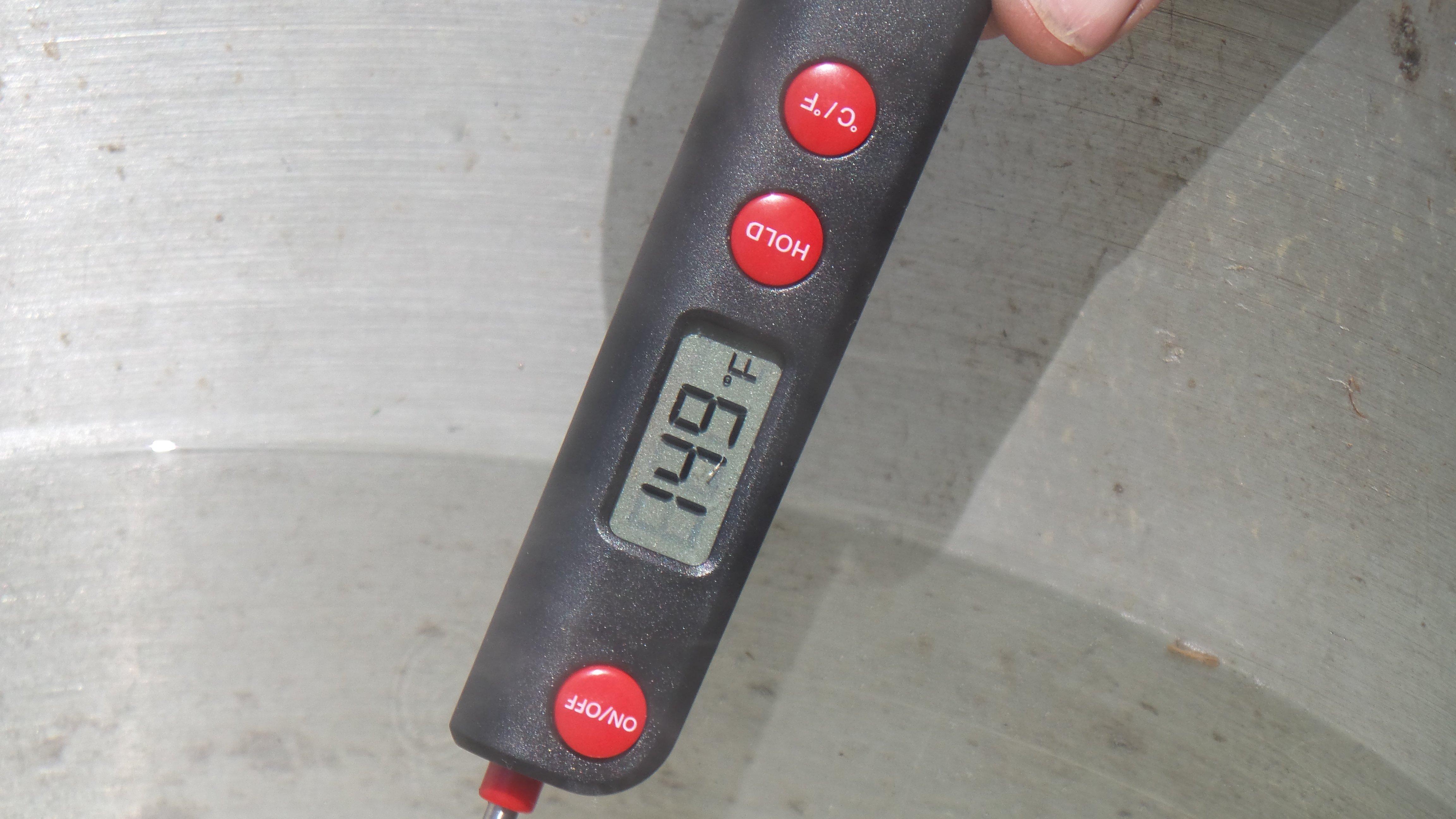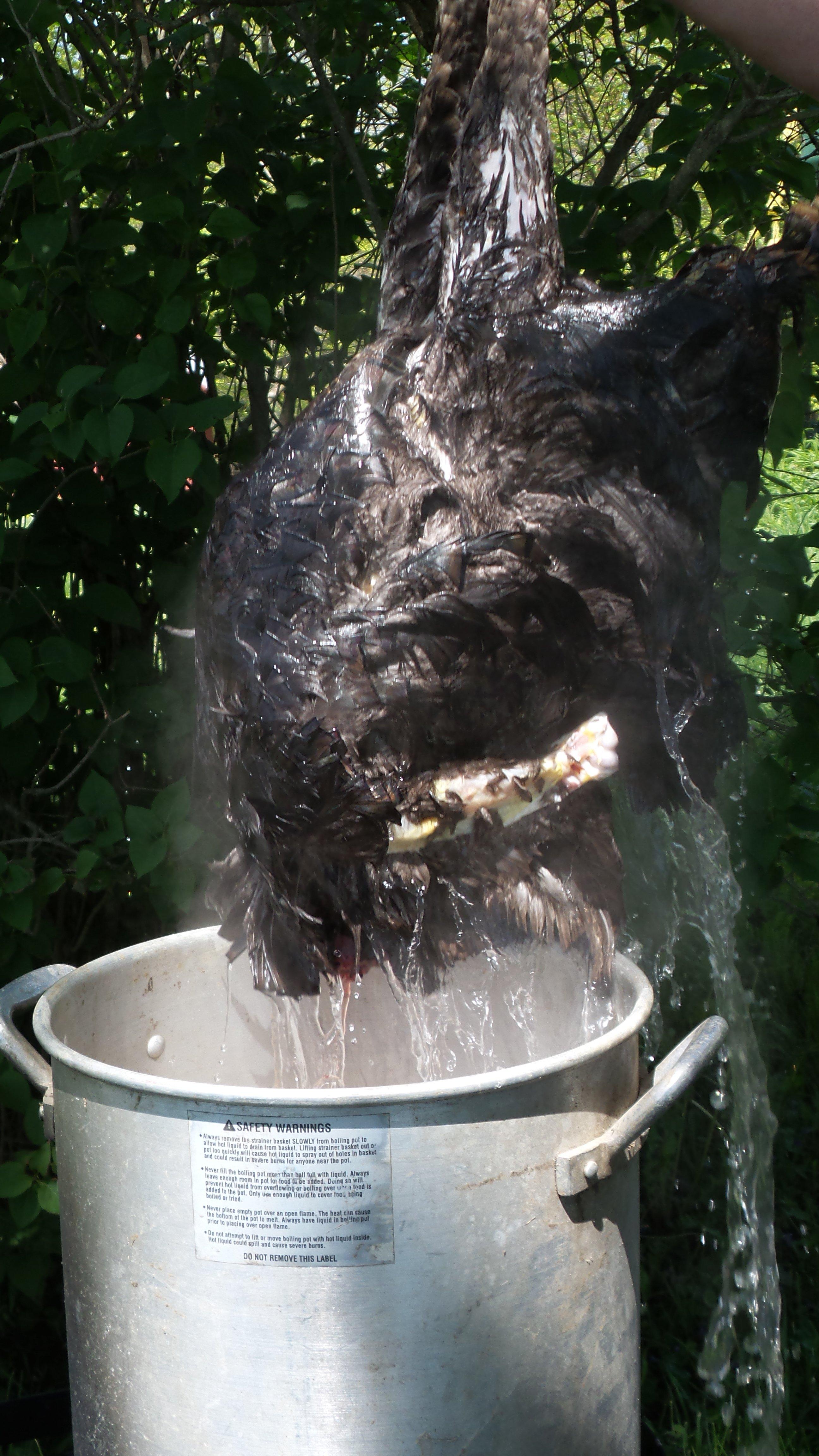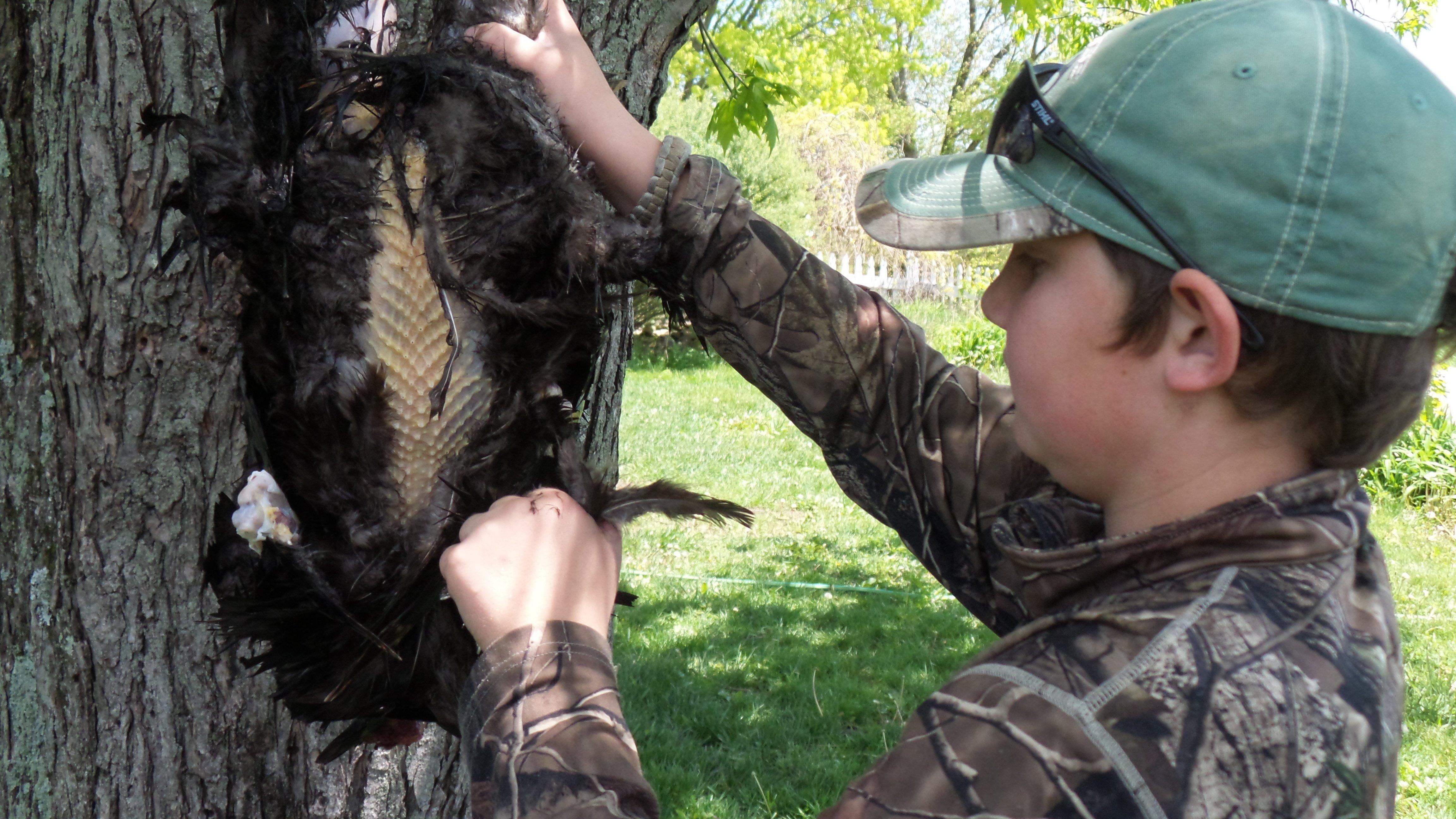How We Pluck a Wild Turkey
Most of the turkeys we kill each spring get skinned. Skinning is faster, gets the meat cooled down quickly, and works for the vast majority of the recipes we use. But once or twice a season, when time permits, I like to pluck a whole bird for smoking or roasting.
Like just about everything in the outdoors, there are several opinions on how to best pluck a turkey. I have tried most of them, and they all ended with a cleaned bird. This method is similar to one we use when we process our meat chickens. It uses a quick dip in hot water to help loosen the feathers before plucking. An outdoor gas burner and large pot are just the ticket for the chore. And, especially if you are married, I suggest this be an outdoor job.
Most of the time, I wait on field dressing the bird till after the plucking is finished so that feathers don't work their way into the body cavity. However, if the weather is warm and it will be an hour or two before you have time to process the bird, go ahead and field dress it by making a small slit in the skin near the vent and reaching up into the cavity to remove the entrails. Lots of folks like to save the heart, liver and gizzard for giblet gravy. Now is the time to place them into a ziplock bag and stick them on ice. Once the body cavity is empty, fill a gallon ziplock bag about half full of ice and slide it into the turkey to help cool the bird from the inside out.
Start the plucking process by filling a large pot with enough water to allow complete submersion of the bird. Temperature is key here. If the water is too cool, all you are doing is getting the bird wet. Too hot, and you will cook the skin, making it tear easily, and you will set the feathers tightly into the skin, making plucking almost impossible. The optimum temperature seems to be around 145 to 150 degrees. A thermometer, either digital or dial, is a good idea. Adding a few drops of dishwashing liquid to the water helps it to penetrate the feathers and makes plucking a bit easier.
While your water heats, go ahead and remove the head and neck an inch or two above where the neck meets the body. I like to take the wings off at the first joint, leaving only the drumstick shaped portion attached to the bird.
Turkey wings are hard to pluck, there just isn't enough meat on the second wing section to be worth the time it takes to pluck it all the way out. I leave the feet on for now, they make a handy handle to dip and hang the bird by.
If you want to save the tail fan from your bird, go ahead and remove it before dipping. Just run your hand along the base of the fan and feel for the clump of fat and cartilage that holds the feathers together. Slide your knife under the clump and remove the tail fan.
When your water reaches the correct temperature, dip the bird for around 30 seconds. Much longer and you run the risk of cooking the bird. Lift the bird from the water and pull out a feather or two. If they come out easily, the bird is ready to pluck. If they still take a bit of a tug to get them loose, dip again for a few more seconds.
I like to hang the bird by the legs about head high. This position allows easy access to the entire turkey and lets you rotate the bird to easily reach all of the body. Start at the back and pull the feathers out. Grab just a few at a time, attempting too many will tear the skin. Pull with a snapping motion against the grain of the feather, having the bird hanging by the feet makes it easier to pull the feathers down to remove them.
Continue over the entire carcass until it is clean. Any of the small hair-like feathers that remain can be removed by burning them off with a quick pass of a lighter.













